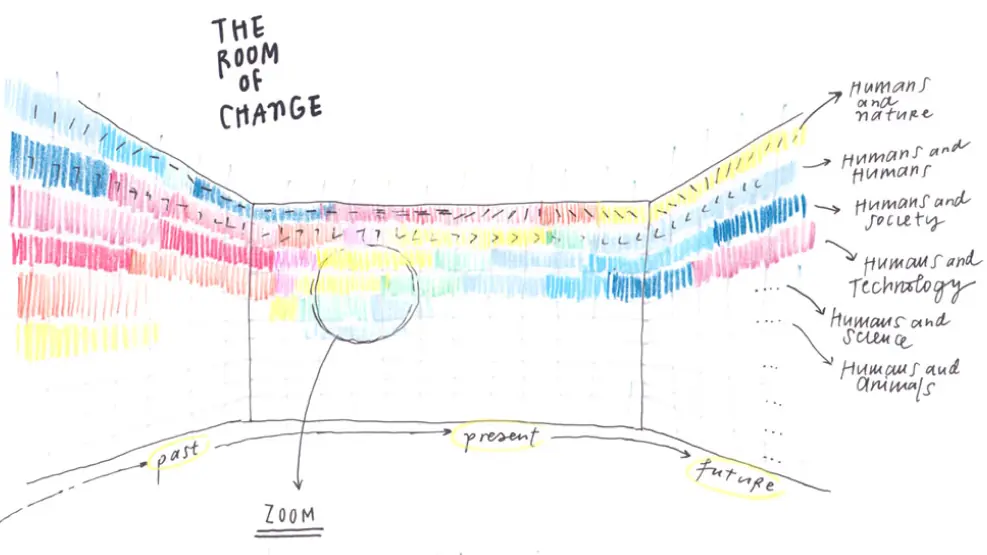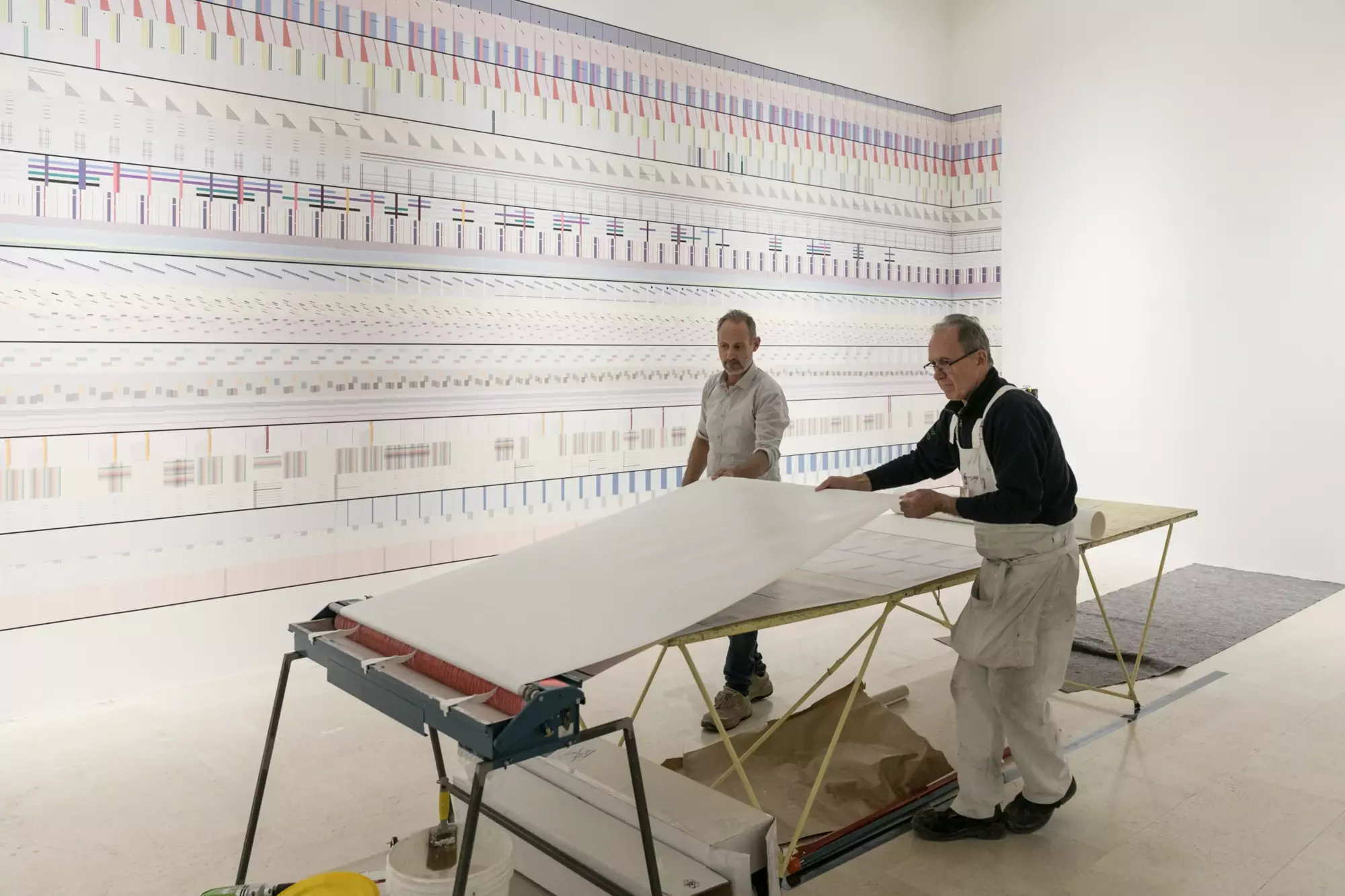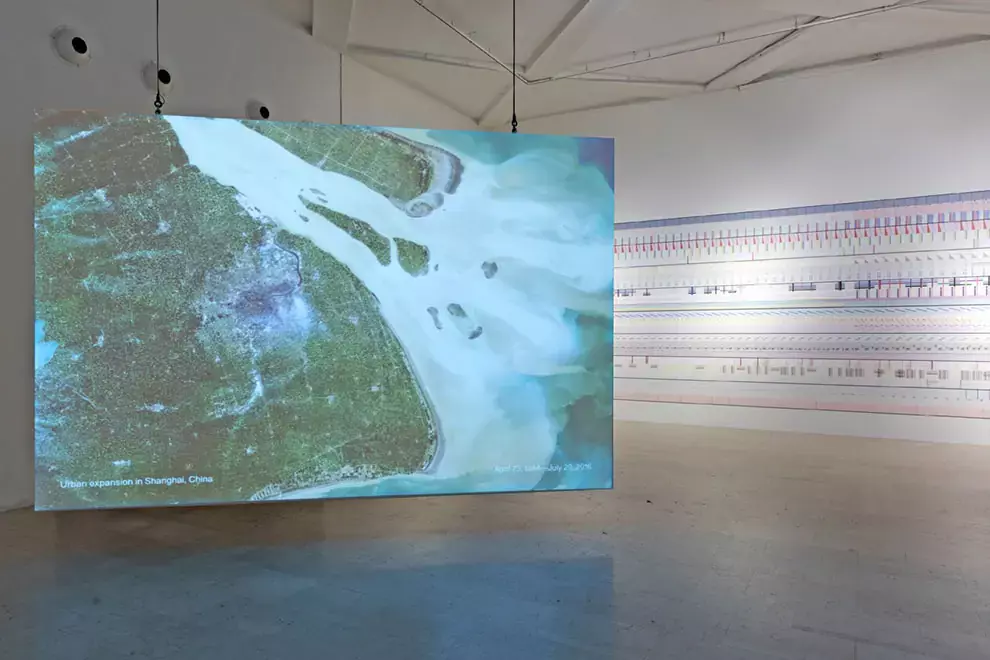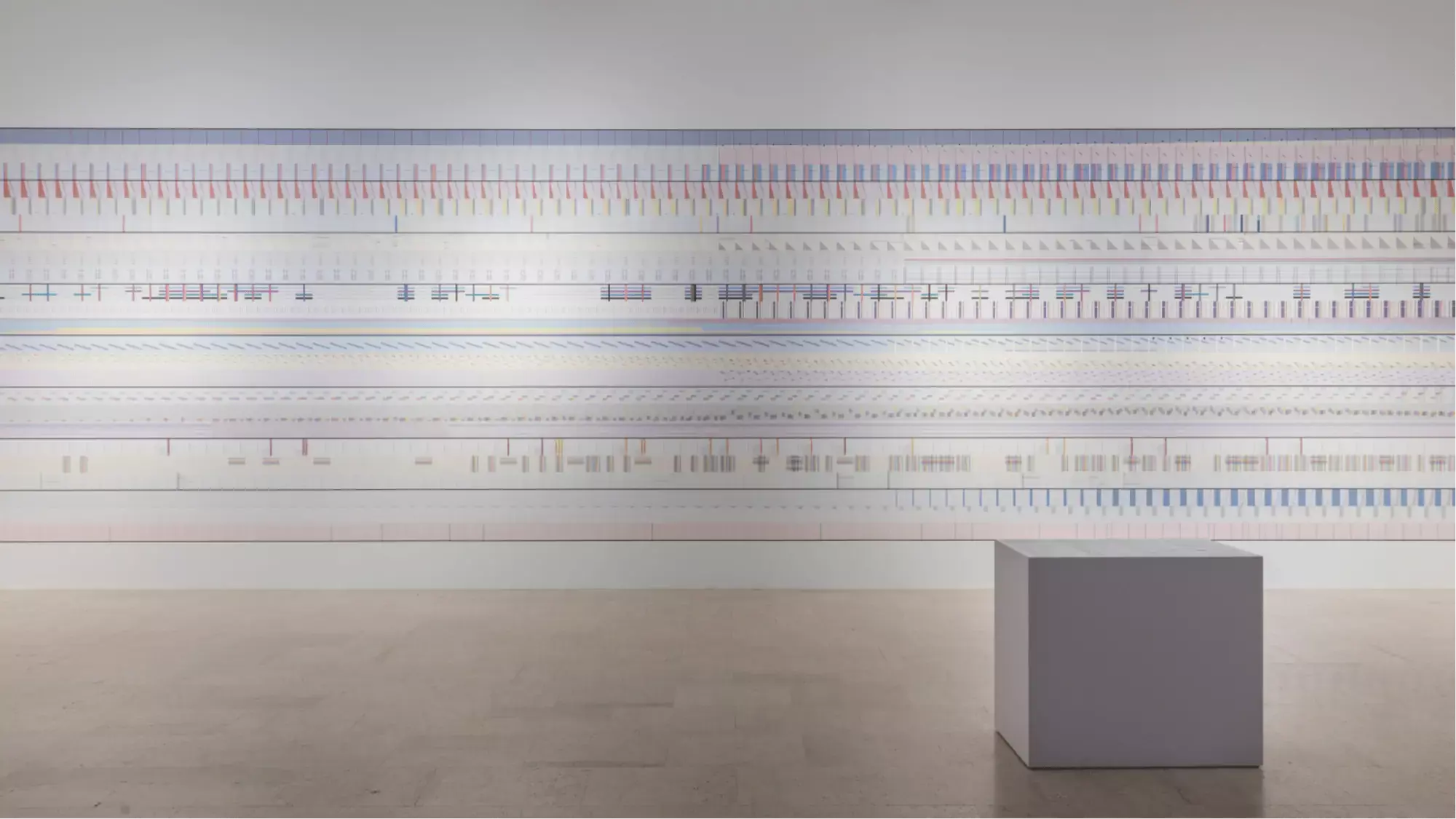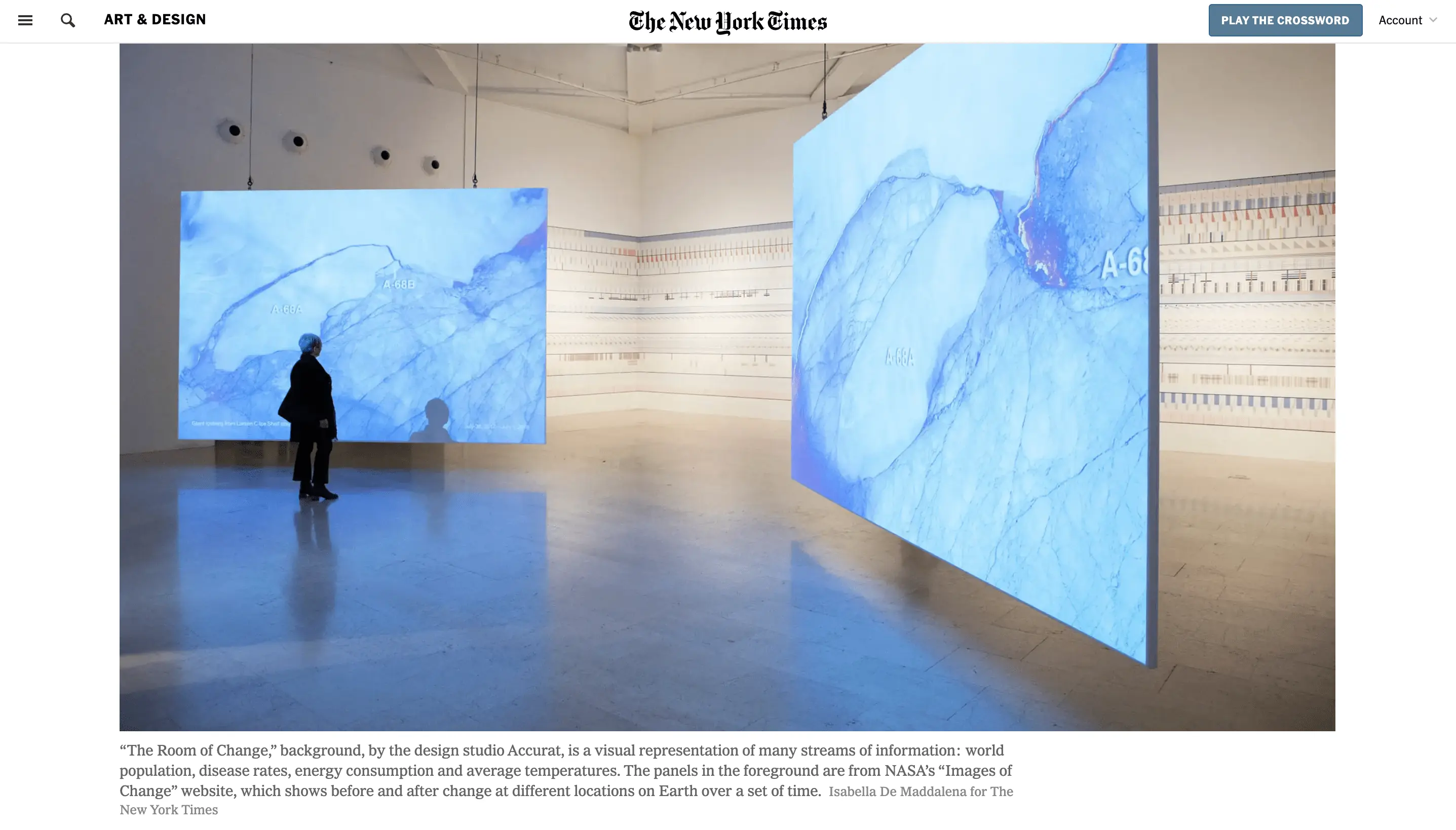The Room of Change was unveiled at the opening of Broken Nature on March 1, 2019. The entire installation comprised a 100–foot long data visualization "tapestry," the NASA projection screens, and a pedestal positioned at the center of the room. The pedestal–portion contained a legend for the artwork and functioned to give visitors a privileged view of the full experience, à la an educational plaque perched on the precipice of a scenic overlook.
Upon entering, visitors might not have registered that the muted shapes, lines, and patterns flanking the NASA imagery were representations of data—much less that they covered the history of the Anthropocene age. Room of Change essentially takes the form of wallpaper to gently immerse viewers into the worldview of Broken Nature. The placid intricacy of the design beckons exploration.
Read like lines of a book, from left to right, the data tapestry covers eight distinct chapters of human interactions. But observed vertically, the dataviz shows the interplay among interconnected forces in specific years. To repair the "broken nature" of one relationship, it suggests, us humans must examine our interactions with everything that we touch and that touches us. The work prompts contemplation of a lofty challenge and primes visitors to view the works that lay ahead in the exhibition as possible solutions.

